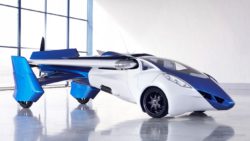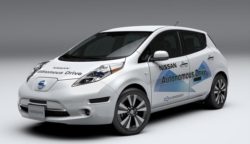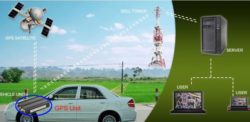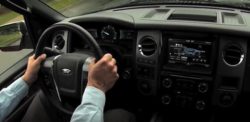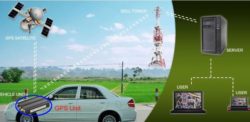Technology for the future is here and Advance Technology is here to stay.
Advanced Car Technologies certainly will take an exciting shape and direction by the year 2020. At a time when Demonetisation breaks the Automobile Industry to 50%, let’s dig into the world of upcoming, smart and savvy Cars using Technology to roll over eyeballs by 2020. In five years, the very idea of a car without a built-in internet connection should be as absurd as buying a laptop without Wi-Fi today. And you’ll speak to dumbfounded youths about songs coming on the “radio” while they remind you that cloud-based music libraries are available with a simple voice command.
Henry Ford (1940) once said, “Mark my word : A combination airplane and motor car is coming. You may smile but it will come. And, sure it has. The Aeromobile unveiled a Flying Car to come our way in 2017.
AeroMobil is a flying car that perfectly makes use of existing infrastructure created for automobiles and planes, and opens doors to real door-to-door travel. As a car it fits into any standard parking space, uses regular gasoline, and can be used in road traffic just like any other car. As a plane it can use any airport in the world, but can also take off and land using any grass strip or paved surface just a few hundred meters long, it says on its website. http://www.aeromobil.com/ Better than a Bird, better than a plane, better than superman says Mashable.com A glimpse into the video on Future Cars and Technology Playlist at http://youtube.com/ensuregroup is quite interesting to see the aeromobile flying high in the sky.
Strike a pose – Sounds pretty interesting? As you read on, here’s information on my Desk, Jaguar Land Rover has developed technology that uses facial recognition and gait analysis to identify drivers. Cameras mounted under the windows capture video and photos of people as they approach and these are compared with images stored on its computer.If they match, the car will unlock and open the doors. The design could save drivers the hassle of having to carry and find their keys – and make it easier if they are laden with bags of shopping.
Details in the patent says: “The user of the vehicle must carry out a registration process which requires them to record a still image of their face and a moving image such as a hand gesture or their gait as they approach the vehicle.”
Using video footage and gait recognition ensures thieves cannot fool the system by holding up photographs of the owner that they have printed out.
The technology allows several people to register with the same car, so friends and family can unlock and drive it when necessary.
Japanese electric car maker GLM stays competitive by selling its own flashy sports cars as well as the technology platform to rivals.
The U.S. National Highway and Transportation Safety Administration is investigating Tesla vehicles that include the company’s “Autopilot technology,” which allows the cars to drive on highways on their own. Hands off the steering wheel could be distractive too.
With a Automotive Technology, the folks at Ford, Google, and other companies have made similar projections of fully autonomous cars which should be on road by 2021. The challenge, of course, will be communicating to the other autonomous and human-piloted cars on the road. That we call, the Connected Cars in every way.
A developing technology called Vehicle-to-Vehicle communication, or V2V, is being tested by automotive manufacturers like Ford as a way to help reduce the amount of accidents on the road. V2V works by using wireless signals to send information back and forth between cars about their location, speed and direction. The information is then communicated to the cars around it in order to provide information on how to keep the vehicles safe distances from each other. A study put out by the National Highway Traffic Safety Administration in 2010 says that V2V has the potential to reduce 79 percent of target vehicle crashes on the road [source: Green Car Congress].(http://www.greencarcongress.com/2011/07/fordv2v-20110719.html)
Since the mid-2000s, Google scientists and engineers have been working to develop autonomous vehicles that use artificial intelligence software and Google Maps to navigate. Testing of driverless cars on public roads actually has been approved in Nevada, Florida and California as per sources known. In fact, Google says that about dozen self-driving cars are on the road at any given time, and they’ve travelled 500,000 miles (804,672 kilometers) in beta tests.
The massive class schism predicted by Fritz Lang’s Metropolis, cars should certainly still be around by 2026, but they will have certainly changed enormously. Automakers like Audi and Mercedes-Benz believe that in 10 years, fully autonomous driving will be sophisticated enough for regular use. Perhaps we’ll even have the legalities and moral quandaries of self-driving cars sorted out by then.
Despite the great leaps in recent years, the ideas are tremendous and so is the research and blueprints for mobility ready to work out. These technologies could transform the way we drive and increase automotive safety dramatically.
SOME INTERESTING TECHNOLOGY AND CARS:
FLYING CARS
Are Flying Cars Future of Transportation? Might sound absurd but sure, it is. Tomorrow’s skies will be pretty crowded or rather, over-crowded like the ground traffic !
AeroMobil is a flying car that perfectly makes use of existing infrastructure created for automobiles and planes, and opens doors to real door-to-door travel. As a car it fits into any standard parking space, uses regular gasoline, and can be used in road traffic just like any other car. As a plane it can use any airport in the world, but can also take off and land using any grass strip or paved surface just a few hundred meters long, it says on its website. http://www.aeromobil.com/ Better than a Bird, better than a plane, better than superman says Mashable.com A glimpse into the video on Future Cars and Technology Playlist at http://youtube.com/ensuregroup is quite interesting to see the aeromobile flying high in the sky.
AUTONOMOUS VEHICLES
ELECTRIC POWER CARS
The electric car (also known as electric vehicle or EV) uses energy stored in its rechargeable batteries, which are recharged by common household electricity. Unlike a hybrid car—which is fueled by gasoline and uses a battery and motor to improve efficiency—an electric car is powered exclusively by electricity. Electric cars produce no tailpipe emissions, reduce our dependency on oil, and are cheaper to operate. Of course, the process of producing the electricity moves the emissions further upstream to the utility company’s smokestack—but even dirty electricity used in electric cars usually reduces our collective carbon footprint.
Chevrolet Volt is a Hybrid Electric Car. With its all-new 1.5L direct-injected, high-efficiency engine, Volt is the electric car with a backup plan. It runs on an electric charge and generates additional electric power through a gas-powered generator when the battery runs out — giving you the confidence to go as far as you want.
This strange electric car has only 3 wheels and no roof http://cnn.it/2fJ42Ma
COMPREHENSIVE VEHICLE TRACKING
Seamless Management and Monitoring of Vehicles with a Comprehensive Vehicle Tracking System. Whether the vehicle move on the accurate route or not, what time it may reach client location or is the vehicle moving within the assigned boundaries or not. The most ideal solution to all these troublesome questions is implementation of a flexible and comprehensive Vehicle Tracking System (VTS).
The main fundamental on which VTS works is a perfectly coupled Global Positioning System (GPS), whose tracking feature takes care of monitoring and tracking all the vehicles and passes on the related information to the higher authorities. GPS is bundled with the most innovative and state-of-the-art technology standards, especially meant for elements which are at a far distance from the base and need an information exchange between the two. This technology has been the best so far in location of devices / vehicles in a commercially viable environment.
SOLAR CARS
A solar car is a solar vehicle used for land transport. Solar cars only run on solar power from the sun. They are very stable and can come in different sizes. Centre for Automative Research at Stanford came with Solar Car Project : Racing the sunshine is a unique example of Solar Cars racing on the roads. https://solarcar.stanford.edu/wordpress/
The ability to power cars by the energy of the sun is becoming increasingly easy and affordable. Solar drops the carbon footprint—or carbon skid marks—from your EV (Electric vehicle) to nearly nil.
HEALTH INITIATED TECHNOLOGY
There is a large amount of health-related technology being incorporated into Ford cars that will be of use to anyone. Especially for the old people who self drive. Here are just a few being developed by Ford with outside partners:
- a multi-rocking seat to keep blood moving during long rides
- a heart-rate monitor built into the seat
- connectivity via Bluetooth for medical devices
- apps to monitor such things as pollen levels and air quality for people with asthma and allergies
- diabetes monitoring
VEHICLE TRACKING SYSTEM
A vehicle tracking system combines the use of automatic vehicle location in individual vehicles with software that collects these fleet data for a comprehensive picture of vehicle locations. Modern vehicle tracking systems commonly use GPS technology for locating the vehicle, but other types of automatic vehicle location technology can also be used. Vehicle information can be viewed on electronic maps via the Internet or specialized software. Urban public transit authorities are an increasingly common user of vehicle tracking systems, particularly in large cities.
CONNECTED CARS
The Next Generation Chevolet Volt
The great thing about being a part of Automobile Industry that it gives an experience to sharpen the knowledge and know how with the Happenning Technology – You get all the learning when you’re selling something New and our users get the benefits of the Technology Cars.
